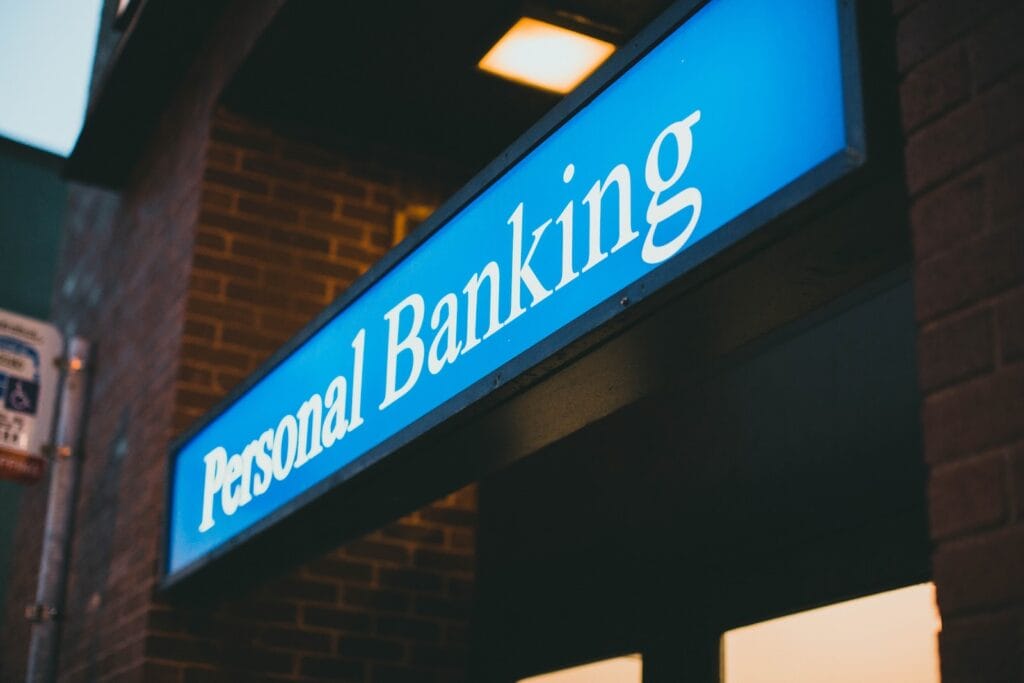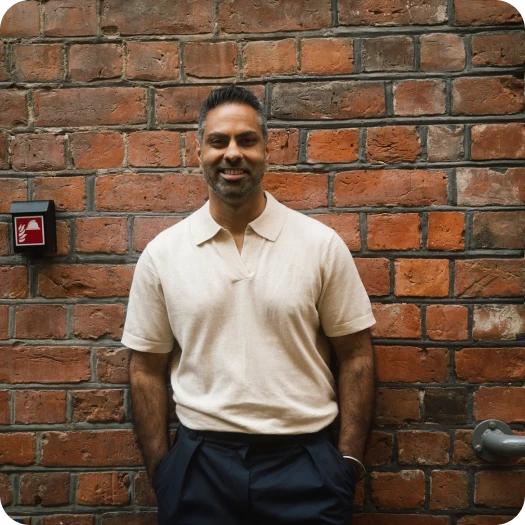How To Get Overdraft Fees Waived: Just Use My Scripts (+ tips)


Banks like Bank of America, TD Bank, Citizens Bank, and Wells Fargo are notorious for overdraft fees, and it’s B.S.
Luckily, you can get your overdraft fees waived (using a simple negotiation script that we'll provide for you) and beat the banks at their own game.
Here’s how to get your overdraft fees waived:

First, let’s take a super quick look at how overdraft fees really work and break down the exact charges you can expect:
What is an overdraft fee?
An overdraft fee is a charge from your bank that occurs when you take more money out of your checking account than what is currently in there.
Rather than simply decline a transaction for insufficient funds at the point of sale, a customer enrolled in their bank's overdraft protection service will see the transaction approved.
Wow, really?
This can be a lifesaver in emergency situations when money is needed and there aren't sufficient funds available in an account.
Most people just pay the overdraft fees without thinking twice about it. They reason that if the bank or credit union was nice enough to let the transaction sail through when it really shouldn't have, then I'll pay it, it is what it is.
But overdraft fees are a big problem for several reasons.
Though the fee will vary from bank to bank, here are overdraft fees from a few of the most popular banks as of 2021:
| Banks | Overdraft Fee |
| Chase | $34 |
| Bank of America | $35 |
| Wells Fargo | $35 |
| US Bank | $36 |
| PNC Bank | $36 |
| Citi Bank | $34 |
These fees might not seem that high for rare, accidental instances occurring just a few times per year.
However, these fees can stack up — and fast (and the banks know it).
One surprising fact is that overdraft fees are incurred per transaction AND can be incurred multiple times in the same day,
So, say you are out and about shopping and using the same debit card. All of the transactions are approved — but you are blissfully unaware that there were insufficient funds in your checking account.
This means that you would be charged separate overdraft fees for all of the approved transactions. This could be hundreds of dollars in fees all on the same day.
Luckily, you can negotiate to get overdraft fees waived if you have the right scripts. That’s why we want to show you exactly how you can get your overdraft fees waived with a simple phone call to your bank.
Here’s your quick guide on Overdraft fees:
- How to get overdraft fees waived
- What do you do when your bank says no?
- How to avoid future overdraft fees
[yellowbox] If you’re worried about your personal finances, you can improve them without even leaving your couch. Check out my Ultimate Guide to Personal Finance for tips you can implement TODAY. [/yellowbox]
How to get overdraft fees waived
Here’s a truth not a lot of people know: All bank fees are negotiable and can even be refunded.
Remember: Your bank wants to keep you as a customer. A well-executed phone call can often make a difference.
Call your bank and use this script
Here’s how I was able to waive an overdraft fee I got years ago: He called up his bank and the conversation went like this:
RAMIT: Hi, I just saw this bank charge for overdrafting and I’d like to have it waived.
BANK: I see that fee. Unfortunately, we’re not able to waive that fee. It was [some BS excuse about how it’s not waivable].
RAMIT: Well, I’ve been a good customer with the bank for X years now and would still like to get it waived since this is a rare occurrence. What else can you do to help me?
BANK: Hmm, one second sir. I see that you’re a really good customer. I’m going to check with my supervisor. Can you hold for a second?
[hold]
I was able to check with my supervisor and waive the fee. Is there anything else I can help you with today?
And just like that, he got my overdraft fee waived. This script works so well for a number of reasons:
- I repeated my complaint and asked the bank rep how they could constructively help me.
- I’ve been a loyal customer to the bank for many years, which you should always use to your advantage when calling to negotiate.
- I was polite but firm. Nothing can force a negotiation to go sour faster than a bad attitude.
You can use this exact script in order to get yours waived too.
And it doesn’t just work for overdraft fees — you can use this for other bank fees too, like processing fees, monthly fees, late fees, and even ATM fees.
What do you do if the bank says no?
There is always the chance they still say no to your request — and that’s okay. When that happens, there are three options you can take:
Be persistent
Banks pay hundreds of dollars in customer-acquisition costs and don’t want to lose you. If you’re persistent enough and make it hard for them to say no, you’ll have the upper hand if they try to shoot you down.
Hang up and call again
Sometimes getting your fee waived is a matter of getting the right bank rep on the line. If the first bank rep keeps shutting you out, politely thank them for their time, hang up, and dial the number again.
Pay the fee
You’re not going to win all negotiations. Sometimes you’re going to have to just pay the fee. BUT if you have the right scripts and prepare, you can be infinitely more ready than you were before.
When it comes to overdraft fees though, the best system is the one where you don’t have to worry about them at all. That’s why we suggest learning how to avoid getting hit with overdraft fees entirely so you don’t have to concern yourself with negotiating them away after the fact.
The world wants you to be vanilla...
…but you don’t have to take the same path as everyone else. How would it look if you designed a Rich Life on your own terms? Take our quiz and find out:
How to avoid future overdraft fees
Prevention is better than a cure. So rather than deal with the consequences of overdraft fees, avoid them entirely with these four methods.
1) Opt-out of overdraft protection
When you sign up for a checking account, many banks try to convince you to sign up for automatic overdraft protection. It’s the policy in which the bank will cover you when you overcharge on your debit card, but charge you the overdraft fee for the trouble.
However, if you choose to opt out of overdraft protection, your card will simply get declined every time you attempt to charge more money than you currently have in the account.
Sure, it might be embarrassing if you’re on a date and it turns out you can’t pay for dinner because your card got declined — but it can go a long way in saving you money on overdraft fees.
TIP: Thanks to banking regulations put in place in 2010, it is illegal for banks to automatically enroll customers in automatic overdraft protection. Banks must give customers a choice to accept or decline enrollment.
2) Utilize account transfers
Some banks offer an overdraft protection service that works by transferring money from another account to the one you’re trying to take money from.
This can be from another checking account, a savings account, or even a credit card (depending on what your bank offers).
For example, say you’re using your debit card to buy dinner. Your debit card is linked to your checking account, which doesn’t have enough money in it. If you have an account transfer set up, it’s okay! If you’ve depleted the money in your checking account, money will just be transferred from your savings to cover the costs.
NOTE: Some banks charge a small fee with this practice as well — though it’ll be much lower than an overdraft fee.
3) Try the envelope system
This is a great system to help you keep track of your expenses for anything.
And it’s simple: At the beginning of each month, you allocate cash for things like going out, groceries, gas, and whatever else into envelopes. Once you’ve spent the money in those envelopes, you’re done spending for the month.
Of course, if there’s an emergency you can definitely dip into other envelopes — but that only means you have less money to spend in those areas.
You can set up your envelope system in three steps:
- Decide how much you want to spend in each major category each month.
- Put money into each envelope (e.g., $200 for groceries, $150 for eating out, $60 for entertainment).
- Spend the money — but when the envelopes are empty, that’s it for the month.
You don’t even need to use physical envelopes. You can track your spending with a separate bank account and debit card while opting out of overdraft protection.
When the month starts, transfer around $200 into the account — and when you go out, only spend that money. Once the money is gone, stop spending.
Whatever system you decide to use, you just need to make sure to decide how much you’re willing to spend in each category (and that’s all up to you).
4) Get a new checking account
One great way to avoid overdraft fees entirely is to get a checking account with a bank that doesn’t have them.
My favorite: Charles Schwab Investor Checking
A few highlights:
- No fees
- No minimums
- No-fee overdraft protection
- Free checks
- Deposit checks via pre-paid envelopes or via iPhone app (snap photos of your check — no need to go into the branch)
- An ATM card
- Unlimited reimbursement of any ATM usage
That’s right. There’s no-fee overdraft protection AND unlimited ATM reimbursement.
How often do you go out with friends and have to withdraw money from out-of-network ATMs? How often do you find yourself at a cash-only taco place at 3:30 am, needing to withdraw $20, but you hesitate because of onerous ATM fees?
Those fees can add up, and Schwab reimburses you for all of them. If you rack up $200 worth of ATM fees in a month, you’ll see a $200 deposit from Schwab before the month ends. This means you can use ANY ATM — corner stores, other banks, whatever — without having to look for some specific bank’s ATM.
Some people will balk at using Schwab because it’s an online bank. That’s fine, but we urge you to reconsider: It’s rare to find a checking account that (1) avoids screwing you at every turn, and (2) actually rewards you for using them.
5) Use a payment app
One way to ensure that your checking account does not get overdrawn and that the account does not incur overdraft fees is to use a 3rd party payments app, such as PayPal, Venmo, Zelle, or CashApp, and to connect the app to your checking account.
So, if you pay for something with the payment app, and there isn't enough money in the bank account that the app is connected to, then the transaction simply doesn't go through — no overdraft fees, no problem.
These payment apps are convenient for P2P — paying your bestie back for paying for your Uber home last night — but generally cannot be set up to pay for bills or for in-store shopping. Because of this, they are limited, but they can be a great way to avoid surprise overdraft fees.
FAQs on Bank Overdraft Fees
How many times will a bank reverse overdraft fees?
Banks waive overdraft fees at their discretion. There's no guarantee they will reverse an overdraft fee.
How long do you have to pay back an overdraft?
It varies by bank, but you ordinarily have five business days to deposit enough money in your account to cover the overdraft. Beyond that, the bank may charge you additional overdraft fees.
Master your personal finances
Once you learn how to avoid getting nickeled-and-dimed by your bank, you’ll be well on your way to living a Rich Life.
And you don’t need any fancy get rich quick schemes or snake oil. All you need is determination and the right systems put in place to help you get the most out of your financial situation and not have to worry about living “frugally” (aka sacrificing the things you love).
In our Ultimate Guide to Personal Finance, you’ll learn how to:
- Master your 401k: Take advantage of the free money offered to you by your company … and get rich while doing it.
- Manage Roth IRAs: Start saving for retirement in a worthwhile long-term investment account.
- Automate your expenses: Take advantage of the wonderful magic of automation and make investing pain-free.
If you liked this post, you’d LOVE my Ultimate Guide to Personal Finance
It’s one of the best things I've published, and totally free – just tell me where to send it: